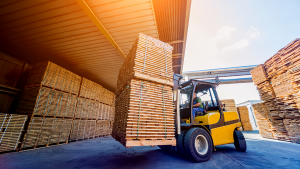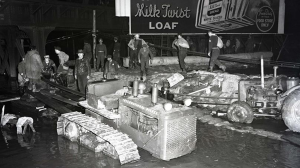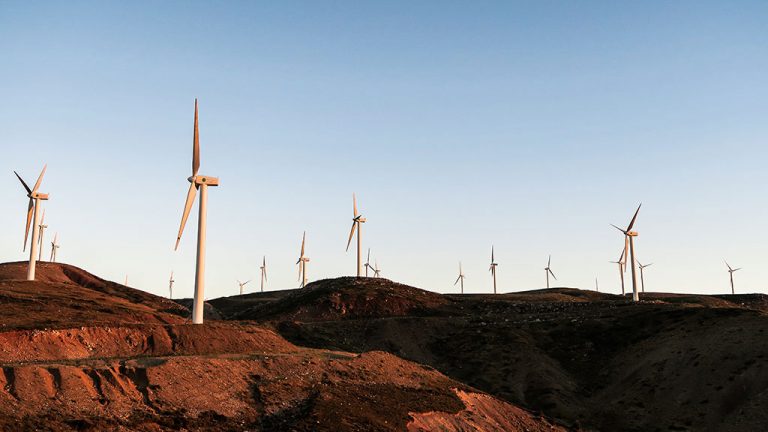The Ontario Ministry of the Environment (MOE) says it’s in vital consultation with stakeholders around reducing the amount of construction and demolition (C&D) waste going into landfills but won’t identify those stakeholders.
The obvious industry players say they haven’t been invited to any discussions while the MOE will not comment on any plans to introduce regulations around C&D waste or where those discussions are in terms of the construction and demolition industry.
It’s ironic because the construction industry is probably going to suffer "culture shock" when new rules and regulations come into place and they should start preparing now, says Rene Gratton, of the Canadian Resource Initiative, an agency designed by the Canadian Construction Association to monitor and report on diversion regulations.
She said there are going to be changes as legislation and regulations evolve, not just in Ontario but across Canada and globally.
It’s a long standing issue. The MOE has been trying to develop a C&D diversion program for a decade but has made little progress. The plan was to divert 60 per cent of materials but as of today no one really knows how much is diverted. Estimates jumped to 25 per cent from 13 per cent.
Craig Moore of the Ontario Association of Demolition Contractors (OADC) says for their part, materials sent to landfill are missed opportunities to cash in since jobs are bid with scrap in mind and both contractors and owners are well aware of the value of metals and other high demand materials.
Certainly, last years’ demolition of the old Woodstock Hospital saw 93 per cent of the materials diverted from landfill.
"I’ve seen contractors offer to pay an owner to tear down their building because of the scrap value," he said, noting the discussions lately have been around soil disposal and the lack of oversight on what is dumped where.
"It’s the million dollar question," said Gratton, about trying to pin down just how much C&D waste is generated and how much goes to landfill.
"I think the person who puts their finger on the number is going to win some great big magical award or a medal. The challenge is that all ICI waste is voluntary reporting but there’s not much dispute that ICI generates two-thirds of the total, about half of that, a third, is from construction. What we’re getting into now is defining what is C&D waste. Is it everything which comes off a construction site? Does that mean waste that comes out of a materials plant isn’t construction waste?"
Large demolition projects, for example, must divert 60 per cent under Ontario’s three Rs regulation but waste from a house renovation or new housing development generally go unsorted into bins because there isn’t enough room or resources to separate the stream.
Waste disposal infrastructure at most Northern First Nations reserves is virtually non existent, she added, while Canada continues to simply ship waste to third world countries where the poor make a subsistence living picking through mountains of garbage to extract anything of value.
Part of the overall problem lies with the government itself, notes Bob Oliver, director of Pollution Probe.
While he lauds the intent of the 2013 Waste Reduction Act to divert more waste streams from landfill, he fears Ontario is missing the boat on opportunities to extract energy from waste.
While a pilot program at LafargeHolcim’s Bath plant is using C&D, railway ties and utilities poles as kiln fuel, eventually those sources will dry up and other sources will have to be considered.
The Waste Diversion act died when the government called an election but it is expected to be reintroduced and would establish an oversight body to be called the Waste Diversion Authority and replace Waste Diversion Ontario. The WDA would have more powers to regulate and prosecute and set eco fees. While the legislation doesn’t specifically mention the construction and demolition industry, it does seemingly close the door on an important outlet for the sector.
There’s clause banning incineration of waste, Oliver notes, calling it short sighted because there are many ingredients of the waste stream including animal waste, fats and other organics as well which could easily be used as a feedstock to fuel energy from waste.
Pollution Probe also wants to be part of the stakeholders’ conversation about the new regulations, he said.
Gratton says the change is coming and there’s already an ongoing shift in thinking — as demonstrated by the Ontario government’s failed 2013 Waste Reduction Act and the MOE’s June 2013 Waste Reduction Strategy towards making producers pay the cost of recovering and recycling what they make and sell. Part of this is already in place with Ontario’s eco fees which add a levy to electronics and other goods to cover the cost of their disposal.
How this would apply to manufacturers of construction materials, however, is unclear, though Gratton says it is inevitable under what’s called Extended Product Responsibility rules.
"We have a big problem on our hands," she said noting construction companies will not be immune and it may even give the multinational construction companies which have been establishing a footprint in Ontario an advantage because they already have to deal with tougher and more complex diversion rules in European markets.
"We are already behind in terms of standards and guidelines so the Canadian construction market has already missed a lot of opportunity," she said.
"If Canadian construction companies think LEED is complicated, they have no idea. Corporate Social Responsibility requirements and carbon footprint regulations and policies are going to come into place and they are going to have to record all that because it will be mandated."











Recent Comments
comments for this post are closed